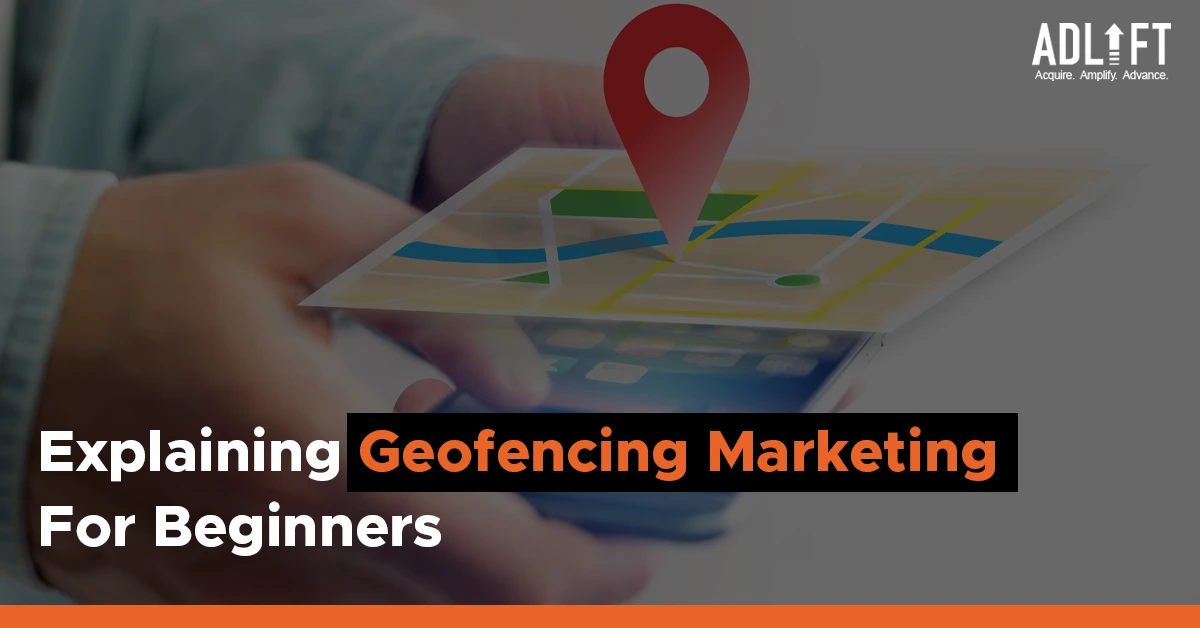Geofencing Marketing Explained: How Location-Based Advertising Works

In the age of mobile technology and personalized marketing, businesses are constantly seeking innovative ways to reach and engage their target audience. Geofencing marketing has emerged as a powerful strategy that leverages location-based advertising to deliver highly targeted and relevant messages to consumers.
In this blog post, we will explore the geofencing marketing concept and how it enhances customer experiences and drives business growth.
Understanding Geofencing Marketing
Geofencing marketing, also known as location-based marketing, is a technique that involves creating virtual boundaries, known as geofences, around specific geographic areas. So, what is geofencing marketing? Geofences can be as small as a single store or as large as an entire city.
When users enter or exit a geofenced area with their mobile device, it triggers the delivery of location-based advertisements, notifications, or other relevant content. This enables businesses to reach potential customers when they are near a physical location, making geofencing a powerful tool for driving foot traffic, boosting conversions, and enhancing overall marketing effectiveness.
Geofencing Marketing Working Process
The next question arises “What is processof marketing by geofencing?” Here’s a step-by-step breakdown of how the process works:
- Defining Geofences: Businesses identify specific geographic areas relevant to their target audience. This can include their stores, competitor locations, event venues, or other relevant points of interest.
- Setting Triggers: Once the geofences are established, triggers are set to determine when to activate the geofencing campaigns. These triggers can be based on a user entering or exiting a geofenced area or specific behaviors such as dwell time or repeat visits.
- Delivering Targeted Content: When a user’s device enters or exits a geofenced area, the geofencing system sends a push notification or text message or displays a targeted advertisement on the user’s mobile device. The content can be tailored to offer promotions, discounts, event reminders, or other relevant information.
- Tracking and Analytics: Geofencing platforms provide data and analytics to track user interactions, measure campaign effectiveness, and gain valuable insights into customer behavior. This information helps refine and optimize future geofencing campaigns.
Benefits of Geofencing Marketing
It offers several key benefits for businesses looking to engage customers in a highly targeted manner. Here are a few advantages it provides:
- Enhanced Targeting: By delivering messages to users close to a physical location, it ensures that the right message reaches the correct audience at a suitable time. This hyper-targeting improves the relevance and effectiveness of marketing efforts.
- Increased Foot Traffic: It can drive foot traffic to physical stores by offering personalized incentives or promotions to users within a specific area. This can be effective for businesses in competitive industries or those looking to boost sales during specific periods.
- Improved Customer Engagement: It enhances customer engagement by delivering timely and relevant content based on a user’s location. Users may respond positively to personalized messages, increasing brand loyalty and customer satisfaction.
- Data-Driven Insights: Geofencing provides useful data and analytics that can be used to measure campaign performance, understand customer behavior, and make data-driven marketing decisions. These insights help optimize future campaigns for better results.
Ending Note
From this blog now, we understand what is geofencing marketing. It creates virtual boundaries and leverages triggers, and businesses can deliver relevant messages and promotions to customers near a physical location.
This technology-driven approach drives foot traffic, enhances customer experiences, and boosts marketing effectiveness. Geofencing marketing utilizes GPS, cellular data, and Wi-Fi signals to determine user locations, enabling real-time, location-based advertising.
With its ability to deliver personalized content, track user interactions, and provide valuable data insights, geofencing marketing presents an exciting opportunity for businesses to connect with their audience and achieve remarkable marketing outcomes.
Recent Posts
- What is YMYL Content? A Beginner’s Guide to Google’s Guidelines July 23, 2024
- Future-Proof Your Website: Top SEO Developments for 2024 July 23, 2024
- PPC ROI: Understanding and Measuring Your Return July 18, 2024
- How to Create Effective Remarketing Ad Campaigns? July 9, 2024
- Maximizing Efficiency with Ad Automation July 9, 2024
- Boost Your Strategy with the Right SEO KPIs July 8, 2024
- Top Advertising Metrics to Boost Your Campaign Performance July 2, 2024
- Boost Your Website Traffic with Voice Search Optimization July 2, 2024
- 10 Key Strategies to Boost Your SEO Conversion Rates July 2, 2024
- Maximize Impact with Digital PR Strategies June 25, 2024
Get
in Touch
Contact AdLift for a 360-degree marketing plan


